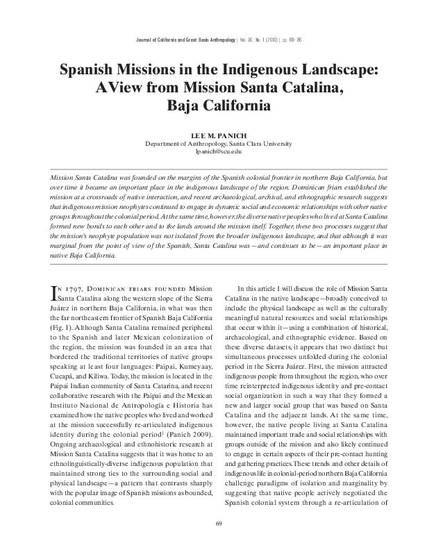
Mission Santa Catalina was founded on the margins of the Spanish colonial frontier in northern Baja California, but over time it became an important place in the indigenous landscape of the region. Dominican friars established the mission at a crossroads of native interaction, and recent archaeological, archival, and ethnographic research suggests that indigenous mission neophytes continued to engage in dynamic social and economic relationships with other native groups throughout the colonial period. At the same time, however, the diverse native peoples who lived at Santa Catalina formed new bonds to each other and to the lands around the mission itself. Together, these two processes suggest that the mission’s neophyte population was not isolated from the broader indigenous landscape, and that although it was marginal from the point of view of the Spanish, Santa Catalina was—and continues to be—an important place in native Baja California.

Copyright © 2010 Malki Museum, Inc. Reprinted with permission.